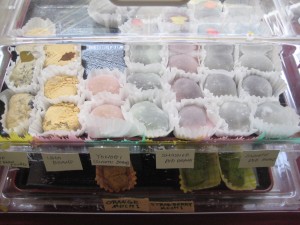Whether you’re a new student for the Japanese Proficiency Exam or have taken it in the past, the JLPT (Japanese Language Proficiency Test) in 2010 has changed. Consequently, how to study and handle the exam has also changed. This article will discuss the history of the exam and why changes were brought about, what’s new about the Japanese Proficiency Test for 2010, and how to best study to pass the JLPT.
The reason why the test was changed in 2010 was test takers and school administrators were complaining that the exam wasn’t adequate. What kind of exam, they wondered, measures language ability without any spoken component to it? Although there is still no speaking contained in the Japanese Proficiency Exam, it was rumoured that the exam’s setup was getting oboselete and predictable. The Japanese authorities responded with a new test.
The main changes in the exam are as follows:
2009 – there were 4 levels of the Japanese Proficiency Exam: 1-kyu, 2-kyu, 3-kyu, and 4-kyu. 1-kyu represents the highest level, “fluency” in the Japanese language. 1-kyu consists of obscure Japanese grammar patterns, insanely hard reading passages, and listening sections that sometimes make you wonder if the language you heard was actually Japanese. 4-kyu is the entry level part of the exam, “beginner.”
2010 – 5 levels 1-kyu, 2-kyu, 3-kyu, 4-kyu, 5-kyu. Here’s what happened with each level of the JLPT:
1-kyu got harder. This is because a lot of university students, embassy applicants, translators, etc. were mastering the exam at a faster rate. The Japanese government responded by making the content of 1-kyu harder.
2-kyu stays the same. This is actually very good for potential job seekers and ambitious employees who want to work in a Japanese company. 2-kyu represents “business fluency” and while studying to pass the 2-kyu level, students actually learn quite a lot of useful Japanese in the process.
3-kyu – a new level. The jump between the old 2-kyu and 3-kyu was too great, so there is now a new level of the Japanese proficiency exam. “intemediate”
4-kyu is the old 3-kyu level. Sorry 3-kyu holders, your level of Japanese has just been brought down a level.
5-kyu is the old 4-kyu level. Sorry 4-kyu holders, “.
The scoring system has changed. Gone are the days where test takers can get 100 on reading and vocabulary, a 50 on listening, and still pass the test with flying colors. Now every section needs a passing score to get a passing grade on the exam.
So for each level:
1-kyu you’ll need to get a 70% on the Vocabulary Section, Listening Section, and Reading / Grammar Sections. If you score below a 70 on any of these sections, you fail the exam.
2-kyu, 3-kyu, 4-kyu, and 5-kyu you’ll need to get a 60% “.
With each drop in difficulty, the length of the test shrinks. The vocabulary, reading, and listening sections also get easier.
What this means When studying for the Japanese Proficiency Test going forward, all test takers must be more cognizant of developing all their language skills. If a test taker fails to do the Reading, Listening, or vocab recognition sections properly, they fail the test overall.
Therefore when studying, please purchase a listening book, as well as a reading book and a grammar book. Look for the publishers Japan Times or ALC, both companies have great reputations in Japan, and write quite useful series. Any specific questions please feel free to ask on this article.
PS – If you haven’t started studying, please start now! Create a regiment, prepare to study at least 2 hours a week, and aim for on average 3 to 4 hours per week. The Japanese Proficiency Exam in New York City (and the rest of the U.S.) will happen less than 6 months from now, in December.


 .
.